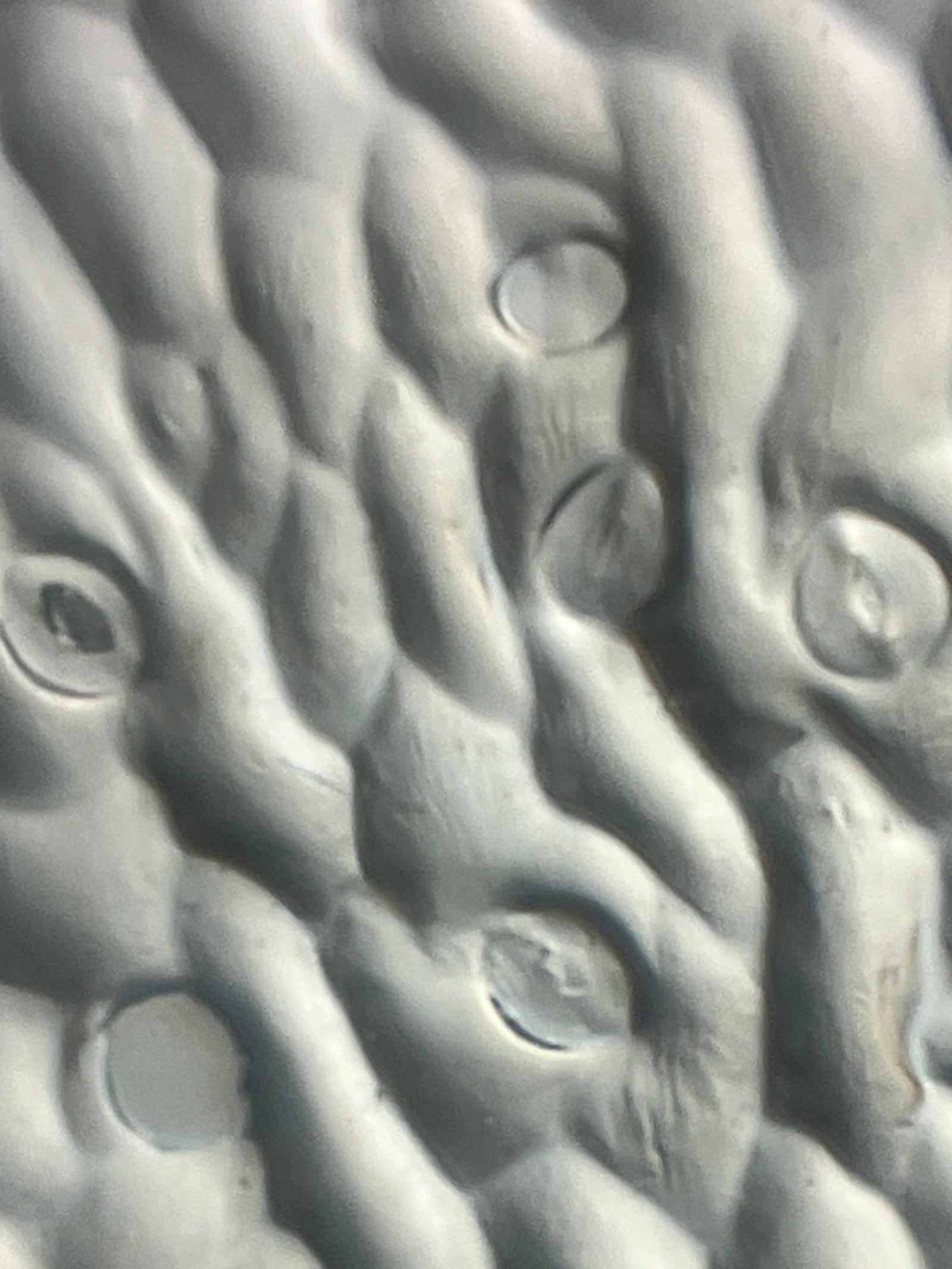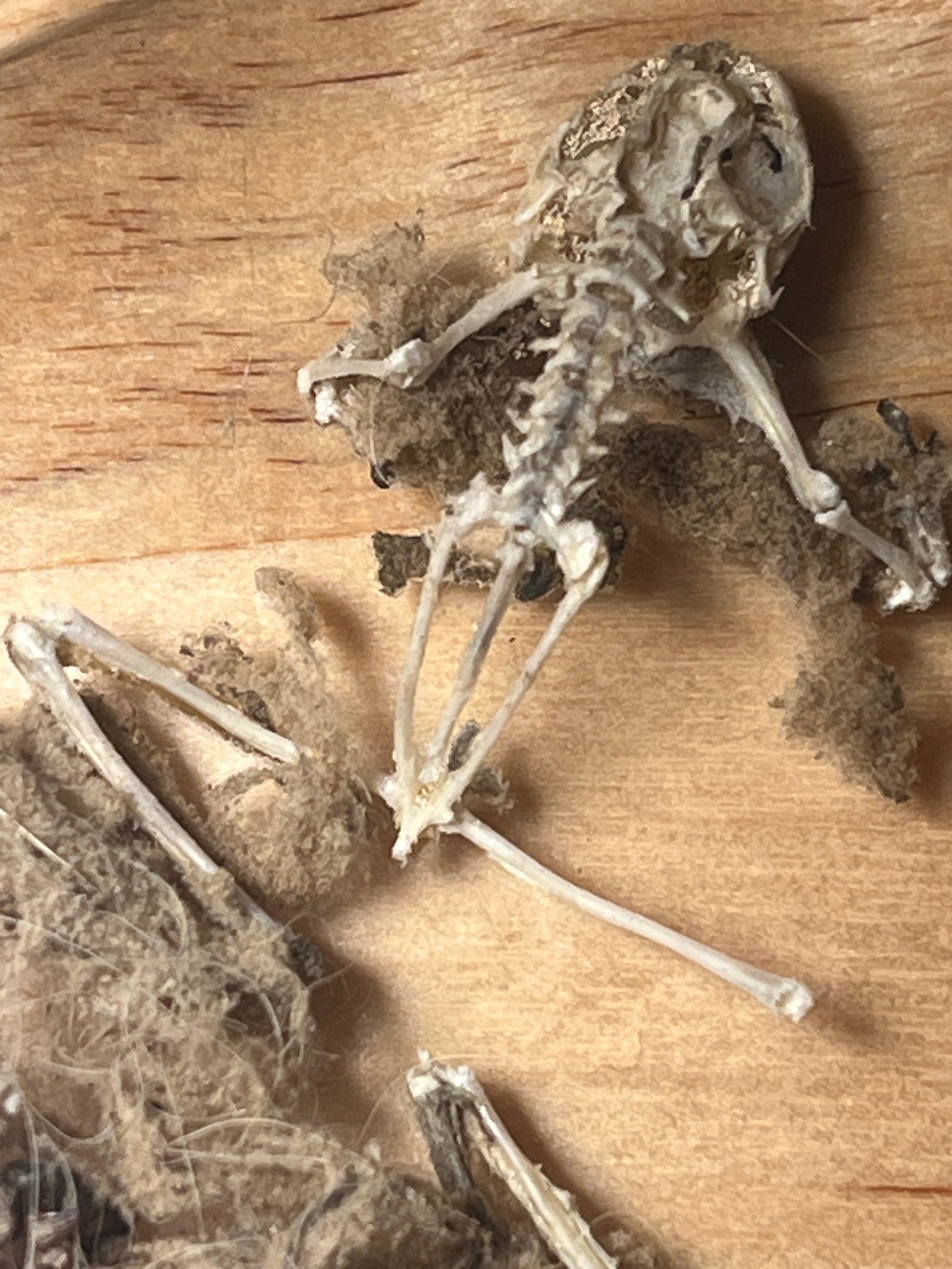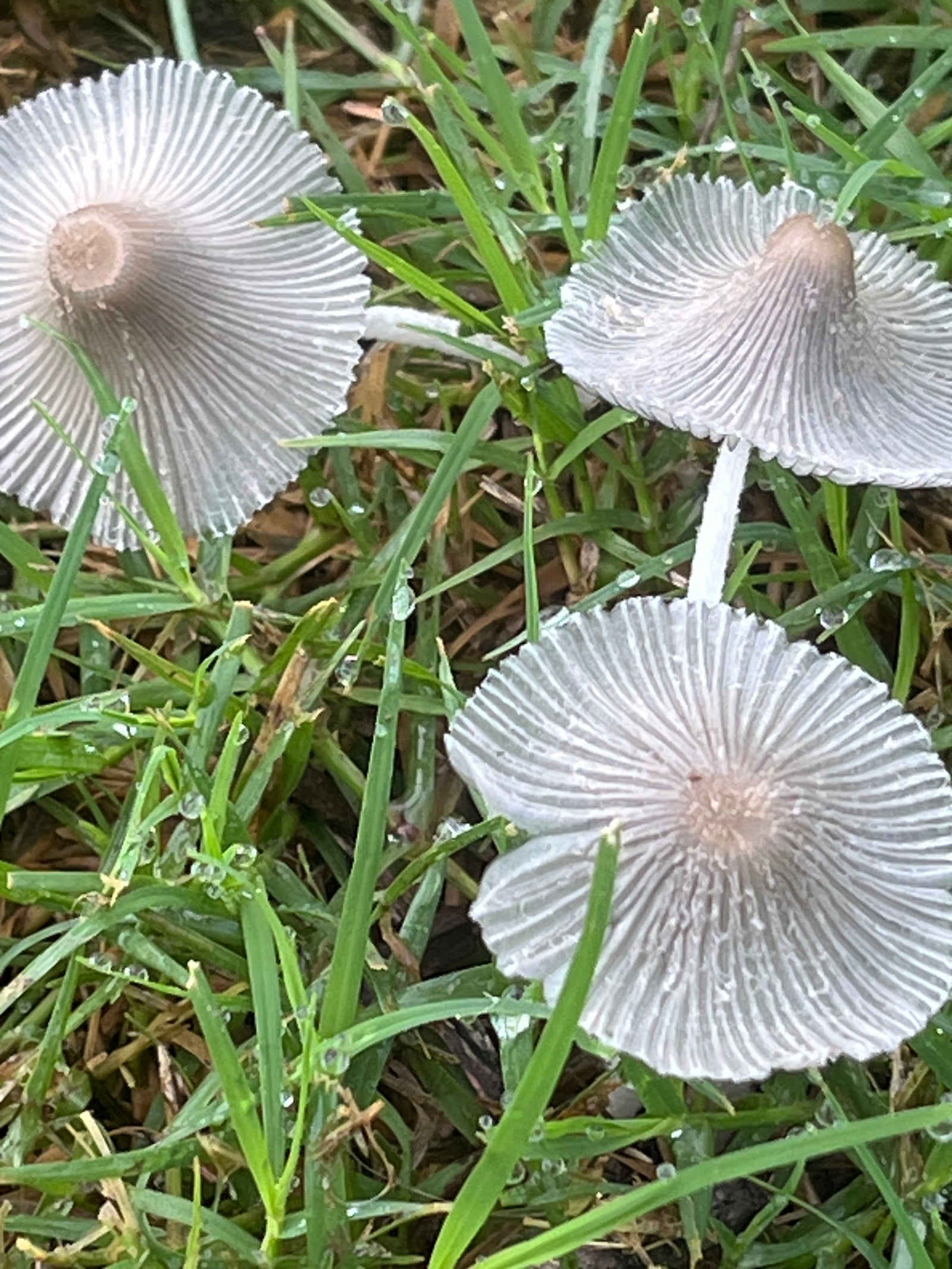Summary:
-
The seasonal color change leaves go through can be seen on both the macroscopic and microscopic level,
-
As leaves land on the ground and decompose, they provide nutrients to the soil by becoming food for microbes,
-
Share your Foldscope pictures of fall leaves and soil microbes on the Microcosmos.
Question Prompt:
What microscopic changes do leaves undergo in the fall?
How do leaves contribute to soil health when they fall to the ground?
 Figure 1. Various fall leaves viewed under a Foldscope 2.0 at 50X magnification
Figure 1. Various fall leaves viewed under a Foldscope 2.0 at 50X magnification
(Photo Credit: Holly A. Stuart)
Whether you choose to address the question prompts above or create your own questions, you and your students can take a deep dive into the microscopic world of leaves and nutrient recycling with a classroom set of Foldscopes.
 Figure 2. Decomposing leaves in the garden bed
Figure 2. Decomposing leaves in the garden bed
(Photo Credit: Holly A. Stuart)
Background:
Senescence is the process that results in leaves changing color and falling off of the plant. The process starts with a color change induced by a decrease in daylight hours and cooler temperatures. Eventually the leaves dry up and drop to the ground where the nutrients that had been stored inside them are returned to the soil.
 Figure 3. Fall leaves starting to change color
Figure 3. Fall leaves starting to change color
(Photo Credit: Holly A. Stuart)
This month you will observe leaf color change and nutrient recycling on the microscopic scale. This blog includes sample ideas, slide techniques, and student research suggestions to guide you and your class’s longitudinal study in the garden!
Materials:
-
Scissors (these are included in the classroom bundle)
-
Petri Dishes (these are included in the classroom bundle)
-
Ring Stickers (a variety of thicknesses)
-
Beaker
-
Leaves that are changing colors
-
Leaves that have fallen to the ground and started breaking down
 Figure 4. Maple leaves viewed under a Foldscope 2.0 at 50X magnification
Figure 4. Maple leaves viewed under a Foldscope 2.0 at 50X magnification
(Photo Credit: Holly A. Stuart)
Color Changes
Autumn months bring fewer hours of daylight causing trees to stop making chlorophyll in the leaves. This process ends with the leaves changing from green to their fall color. Yellow leaves appear because the green of the chlorophyll stops masking the yellow pigments that are present in the leaves year round. Red colors however are different. Red pigments begin to be produced at the same time that production of the green chlorophyll slows down. The green color fades away and the red color takes over.
 Figure 5. Elm leaves viewed under a Foldscope 2.0 at 50X magnification
Figure 5. Elm leaves viewed under a Foldscope 2.0 at 50X magnification
(Photo Credit: Holly A. Stuart)
Leaves are straightforward samples to prepare on a slide. Cut a small section of a leaf from the plant. Place this leaf sample on a slide and cover it with a clear sticker or cover slip. Place the slide in your Foldscope, adjust the focus and lighting, and observe your sample!
This video shows a time lapse of various leaves changing color. The actual process takes about a week for one leaf to turn from green to its fall color. Students can use their Foldscopes to create time lapse videos of leaves changing colors on the cellular level, too! Does the color begin to change along the veins, on the outer edges, or in the middle of the leaf? Do some leaves change color faster than others? Or is it the color that determines how fast the change takes place? These are all great questions that students can ask and explore with their Foldscopes!
Nutrient Recycling
How do plants break down and release their nutrients back to the soil? As we discussed in last month’s Foldscope In The Classroom blog, it happens with the help of microbes, bacteria, and fungi. By eating the dead leaves, these microbes chemically break down the cell walls of the plants, converting the cellulose, hemicellulose, and pectin into simple sugars and releasing nitrogen back into the soil. In Figure 6 below, you can see the difference between a leaf that has just fallen to the ground and one that has begun to decompose. The leaf on the left still has visible cell walls but the leaf on the right does not because the microbes have been eating them up! Nutrient recycling is one reason why gardeners recommend letting leaf litter stay on the ground throughout the year.
 Figure 6. Fall leaves found in garden soil viewed under a Foldscope 2.0 at 140X magnification
Figure 6. Fall leaves found in garden soil viewed under a Foldscope 2.0 at 140X magnification
(Photo Credit: Holly A. Stuart)
To prepare a slide looking at leaf litter and the microbes that are busy eating them, gather some leaves from the garden area, place them in a beaker and let them soak in water (24-48 hours). Then use tweezers to remove small pieces of leaves and mount them on a slide using the ring stickers. The ring stickers provide space for the water that is around the leaf and let you see the microbes in action! In the images below you can see many tiny dots all around the rotifer - these are bacteria. (I am not sure what the larger circular microbe is, if you do, please let me know!) Click here to read my Microcosmos post about bacteria found in the soil to watch videos of the bacteria swimming around the slide!
 Figure 7. Microbes viewed under a Foldscope 2.0 at 140X magnification plus 5X digital zoom on phone
Figure 7. Microbes viewed under a Foldscope 2.0 at 140X magnification plus 5X digital zoom on phone
(Photo Credit: Holly A. Stuart)
Students can investigate the types of microbes found in different parts of the garden. Are they all the same, or do microbes prefer certain leaves or locations in the garden?
Connect:
Remember, these are only suggestions to guide you along your garden study. What questions do your students want to answer? How many different types of fall leaves could you find in and around your garden? Did you observe microbes recycling nutrients? Let us know what you saw with your Foldscope! Share your observations, discoveries, and pictures with the Foldscope community on the Microcosmos. Your contributions will build up a strong scientific database that can help support new and innovative scientific research. Tag us on social media, too. We love to see how Foldscopers around the world are using their Foldscopes in new and innovative ways!
Next month will be the final installment of the Foldscope In The Classroom: In The Garden series. It will be a reflection of lessons learned throughout the year with a focus on the value of doing scientific research in the outdoors, the skills developed with this intentional hands-on study, and how engaging science can be when it is student-led.
 Figure 8. Colorful leaves in the garden
Figure 8. Colorful leaves in the garden
(Photo Credit: Holly A. Stuart)
Facebook: @Foldscope
Instagram: @teamfoldscope
Blue Sky: @teamfoldscope.bsky.social
TikTok: @foldscope
Threads: @teamfoldscope
Twitter: @TeamFoldscope
Sources:
https://artsci.usu.edu/herbarium/activities_fun-stuff/fun-facts-about-fungi/decomposition
https://www.smithsonianmag.com/science-nature/watch-leaves-change-color-matter-of-seconds-180972903/



